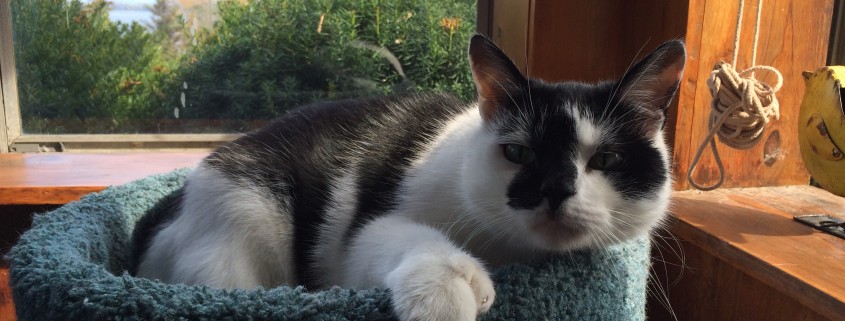Feral Cats
Cats have been living with humans for around 5000 years. Despite their domestication and adaptations to living in our homes, cats retain a high level of independence. Sadly there is a large number of cats who have no homes and must take care of themselves for survival. Cats who have lived with humans and are friendly / tame are considered strays. Stray cats can often be adopted and make great pets. Cats who have been born and grew up in the wild are considered feral. Feral cats are fearful of people and have a difficult time adapting to living with humans. Shelters already have their hands full trying to find homes for affectionate, pet cats so they will rarely accept feral cats (with the exception of kittens) who are basically wild animals and not comfortable around people. Life is very difficult for feral cats because they must hunt their own food to survive and find their own shelter. People tend to consider feral cats a nuisance because they hunt birds, scuffle with our pets, and get into gardens, but the bottom line is that humans are responsible for bringing cats into our society so we are responsible for their well-being.
Relocating or destroying feral cats is not a long-term solution to dealing with feral cats. Once a population of cats forms a colony removing them will only lead to more cats moving in. The best way to help feral cats is to support a program called “TNR”. Trap, Neuter, Release is a way of catching feral cats in humane traps and bringing them into shelters or vet clinics so they can neutered/spayed and vaccinated then returned to their colony. TNR prevents feral cats from reproducing to limit their populations and helps prevent the spread of disease. Cats that have been spayed or neutered and returned to their feral homes can be identified by a clipped ear that was surgically cut while that cat was under anesthesia so that TNR volunteers so not waste their time trapping the same cat twice. These types of programs have been proven to be the most cost effective and efficient way to control feral cat populations, plus they are the most humane.
Feral cat colonies occasionally attract the compassion of cat lovers who become their caretakers. If you live near feral cats you can help them out by providing them with food, water and shelter. There are lots of easy ways to build insulated boxes to provide cats with an escape from the elements and instructions can be found online. Cats lucky enough to find a colony with a caretaker have the best chance for survival. While feral cats may never become cuddly, loving companions, but they still deserve our compassion.
Studies
TNR and conservation on a university campus: a political ecological perspective.
Opinions from the front lines of cat colony management conflict.
Assessing risks to non-target species during poison baiting programs for feral cats.
Bartonella and toxoplasma infections in stray cats from Iraq.


